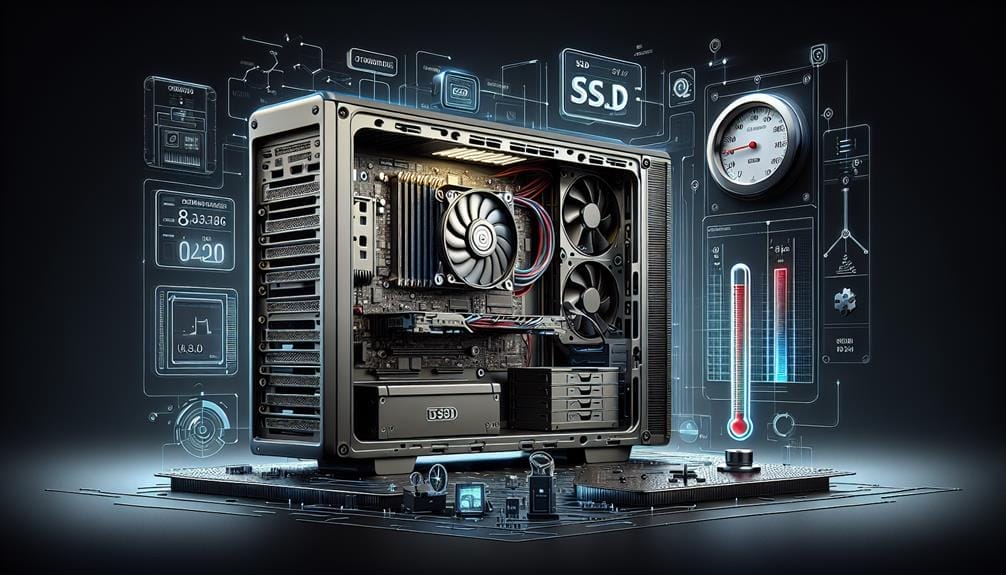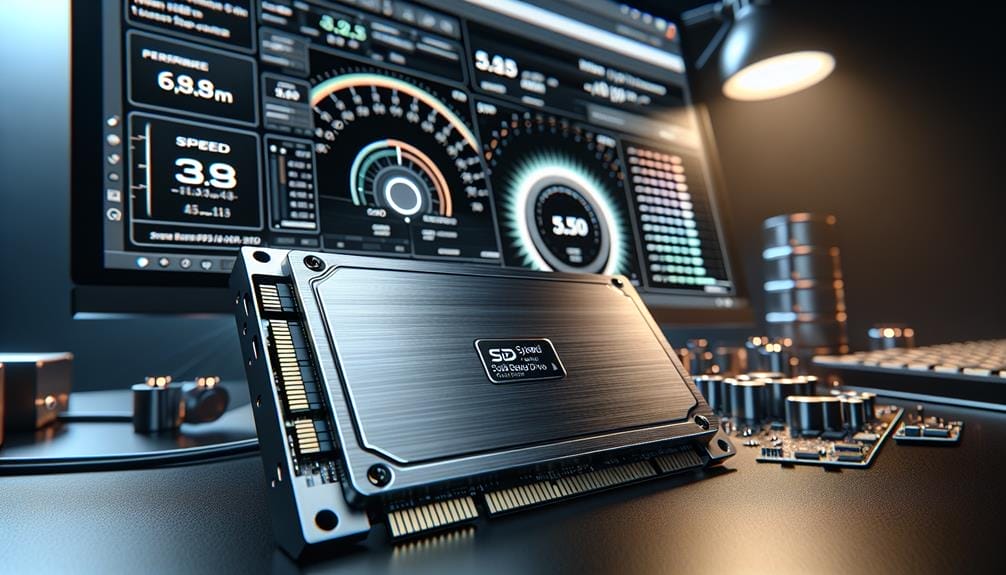Maximize Your SSD: Top Speed Testing Tips

In the realm of computing, the efficiency and rapidity of solid-state drives (SSDs) are of paramount importance because they significantly affect the performance of the whole system. As technology progresses, the importance of refining SSDs’ performance through thorough testing and improvement is greater than ever.
Whether you are an individual user seeking to enhance your personal computing experience or an IT professional responsible for managing an array of systems, the pursuit of top speed testing tips for SSDs is paramount. By exploring the nuances of SSD speed testing and the factors influencing performance, this discussion aims to provide valuable insights and practical strategies for unlocking the full capabilities of SSDs.
Key Takeaways
- Testing SSD speed performance is important to ensure optimal performance, identify potential issues, compare different models, and enhance overall system performance.
- There are several tools available for testing SSD speed performance, such as CrystalDiskMark, AS SSD Benchmark, ATTO Disk Benchmark, HD Tune, and Anvil's Storage Utilities.
- Factors affecting SSD speed performance include interface type, SSD controller and firmware, NAND flash memory type, overprovisioning and wear-leveling algorithms, and operating system and driver optimizations.
- To test SSD speed performance, close unnecessary applications, run the chosen benchmarking tool, record the sequential and random read/write speeds, analyze the results, and compare them with the SSD's specifications and other models.
Importance of SSD Speed Testing

SSD speed testing is crucial for ensuring optimal performance, identifying potential issues, and comparing different models, thereby enhancing overall system efficiency and extending the SSD's lifespan.
The impact of SSD speed on system performance, particularly in gaming experiences, is significant. Slow read/write speeds can lead to longer loading times, reduced frame rates, and overall diminished gaming experiences.
Through speed testing, users can ensure that their SSD meets the performance requirements for smooth gaming and other intensive tasks. Additionally, testing allows for the identification of any performance bottlenecks or potential failures, enabling proactive measures to be taken.
Ultimately, by comprehensively evaluating the speed performance of an SSD, users can make informed decisions about their hardware, ensuring an optimal and reliable computing experience.
Tools for Testing SSD Speed
When evaluating the performance of solid-state drives (SSDs), it is essential to utilize specialized tools designed to accurately measure their speed and efficiency. Several tools are available for testing SSD speed performance.
CrystalDiskMark measures sequential and random read/write speeds, while AS SSD Benchmark evaluates SSD performance in real-world scenarios.
ATTO Disk Benchmark tests the SSD's performance at different transfer sizes, and HD Tune analyzes read/write speeds, access time, and burst rate.
Anvil's Storage Utilities measures SSD performance in different scenarios. These tools provide comprehensive SSD speed measurement and performance evaluation, enabling users to assess the capabilities of their SSDs, identify any potential issues or defects, and compare different SSD models effectively.
Utilizing these tools is critical in ensuring the optimal performance and longevity of SSDs.
Factors Affecting SSD Performance

Evaluating the performance of solid-state drives (SSDs) through specialized tools is crucial for accurately measuring their speed and efficiency. Understanding the factors that influence this performance is integral to optimizing the SSD's capabilities and longevity.
Factors Affecting SSD Performance:
- Interface type (SATA, NVMe, etc.)
- SSD controller and firmware
- NAND flash memory type (SLC, MLC, TLC, QLC)
These factors significantly impact SSD performance, affecting read/write speeds and overall efficiency. The interface type dictates the maximum speed potential, while the controller, firmware, and NAND flash memory type determine how efficiently data is processed and stored. Understanding these factors is crucial for making informed decisions when selecting an SSD and optimizing its performance through appropriate settings and maintenance.
These elements are key in maximizing SSD performance and ensuring optimal functionality for various applications and workloads.
Steps to Test SSD Speed
To accurately assess the speed performance of an SSD, it is imperative to meticulously conduct benchmark tests using specialized tools and observe the sequential and random read/write speeds. The following table provides an example of the steps to test SSD speed:
| Steps | Description |
|---|---|
| Close unnecessary applications | Ensure the system is not bogged down |
| Run benchmarking tool | Utilize chosen tool to measure SSD performance |
| Record read/write speeds | Document sequential and random read/write speeds |
By following these steps, users can effectively optimize SSD lifespan and compare SSD models based on their performance.
This approach ensures a thorough evaluation of the SSD's capabilities, aiding in making informed decisions regarding SSD selection and usage.
Optimizing SSD Performance

After conducting thorough benchmark tests to assess the speed performance of an SSD, the focus now shifts to maximizing its efficiency through optimizing various aspects of its operation.
- Enable TRIM support to improve SSD lifespan and maintain performance.
- Update SSD firmware and drivers to ensure compatibility and enhance system responsiveness.
- Implement overprovisioning to allocate additional space for wear-leveling algorithms, promoting longevity and sustained performance.
Additional SSD Speed Tips
Considering the myriad factors that influence SSD speed performance, optimizing system settings can significantly contribute to enhancing overall SSD efficiency.
To maximize SSD speed, it's crucial to enable AHCI mode in the BIOS for improved read and write performance. Additionally, disabling disk compression and indexing, as well as enabling TRIM support, can further enhance SSD speed and lifespan.
It's important to ensure that the operating system and drivers are up to date to take advantage of the latest optimizations for SSD performance.
Furthermore, adjusting power settings to prevent the system from entering sleep mode too quickly can help maintain consistent SSD speeds and improve its longevity.
Conclusion
In conclusion, the significance of testing SSD speed performance cannot be overstated in today's digital landscape. By utilizing various tools and following best practices, users can identify potential issues, compare different models, and optimize overall system functionality.
Understanding the factors influencing SSD speed performance and implementing valuable tips for enhancing efficiency and longevity will unlock the full potential of SSDs, leading to improved productivity and enhanced computing experiences.

